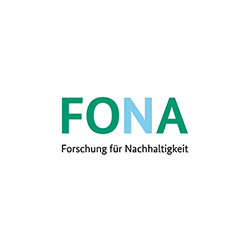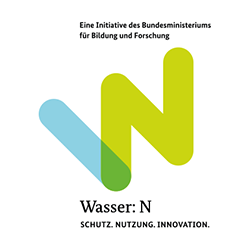
Background
The monitoring of resources used for water supply is a central element of the multi-barrier system to ensure security of supply. Climate adaptation, larger bandwidths of substances to be monitored and the growing importance of risk management are placing ever greater demands on groundwater monitoring. For this reason, DVGW Code of Practice W 108, which was published in 2003, was fundamentally revised and the scope of application extended. The focus was shifted from monitoring to more comprehensive monitoring and the worksheet was expanded to include consideration of quantitative aspects. The LURCH projects with their numerous monitoring techniques provide the opportunity to test these techniques and their combinations with regard to their complementary informative value.
Main questions
(1) Which methods can be efficiently combined/blended between the consortia?
(2) What (additional) information can be gained by combining methods?
(3) How can methods be combined in a task-specific way?
Past Activities
Online meeting on 19.10.2023
On October 19, 2023, the first event took place as part of the cross-cutting topic 'Monitoring Concepts' of the BMBF funding measure 'Sustainable Groundwater Management' (LURCH). The aim was to give the LURCH networks the opportunity to exchange information on project content related to monitoring concepts and to identify possible interfaces.
Thirty-seven representatives from the LURCH networks iMolch, gwTriade, StressRes, WaRM, CHARMANT, PFClean, NitratLurch and IsoGW took part in this first exchange of experience.
In preparation for the exchange of experiences, a questionnaire was sent to the participants. This contained questions on the utilization concepts for aquifers planned in the projects, on the planned monitoring methods and their suitability for specific issues or as a universal procedure. The questionnaire also formed the basis for the project presentations and discussions as part of the exchange of experience. The contributions were summarized in a matrix by Prof. Dr. Licha.
In addition, aspects were identified during the exchange that will be discussed in more detail in the further course of the cross-cutting topic. These include the question of “information-worthy” data, the distinction between hazard prevention and improving system understanding as well as the distinction between surveillance and monitoring. An initial bilateral exchange between individual projects was also initiated.

In addition, aspects were identified during the exchange that will be discussed in more detail in the further course of the cross-cutting topic. These include the question of “information-worthy” data, the distinction between hazard prevention and improving system understanding as well as the distinction between surveillance and monitoring. An initial bilateral exchange between individual projects was also initiated.
Presence workshop 27.05.2024
In a face-to-face workshop in May 2024, the current data basis from groundwater monitoring was critically scrutinized. In the vast majority of cases, the collection of data on groundwater quality serves a predefined objective. The question arises as to whether this data from groundwater monitoring can be made usable beyond this. Do AI methods in data evaluation represent a means of making this data usable for investigative monitoring? What additional information is required in order to make meaningful deductions (e.g. collection of and requirements for metadata)? In addition, the points of contact in the area of monitoring between the projects were discussed. The first key points for the draft of a guideline for practical application are taking shape.


